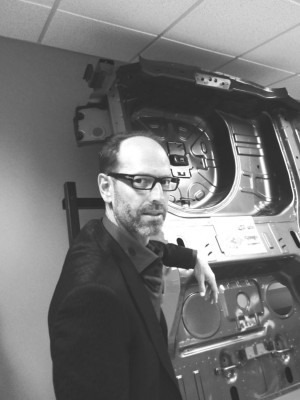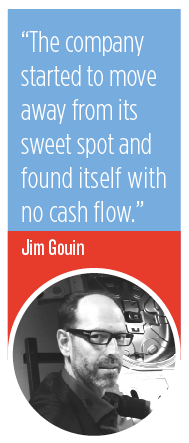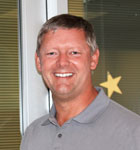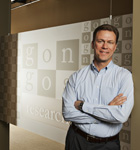
In 2005, Tower International, one of the leaders of the global automotive supply chain, found itself on shaky ground after a series of expensive acquisitions, coupled with lower production rates and increased steel prices, was forced to file for Chapter 11 of the US bankruptcy code. “Tower, not unlike many tier-one automotive suppliers, grew through a series of acquisitions that were financed primarily through debt,” says Jim Gouin, Tower’s CFO and executive vice president. “The majority of the business was tied to trucks and SUVs in North America. Their concentrated strategy worked for a number of years, but when volumes for these products declined and steel prices increased, the company felt the impact of its limited diversity and lack of acquisition.”
Building a team
While in Chapter 11, Tower’s previous management team took a number of steps to improve the operations in the United States, closing 11 plants, reducing its all-in cost for US hourly workers by 15 percent, freezing the pension plan, and capping retiree health care. In addition, about $500 million of loss and low-return contracts were returned to customers.
In August 2007, Tower exited Chapter 11 when Cerberus Capital Management acquired the assets of the company and put a new management team in place, including president and CEO Mark Malcolm, a long-time industry veteran from Ford Motor Company. “Mark was part of the Cerberus team that conducted the due diligence on Tower, and took over as CEO when they purchased the assets of Tower,” Gouin says. “Although many of Tower’s previous issues were addressed in Chapter 11, Mark and the team realized there were numerous opportunities to improve the operations.”
In November 2007, Malcolm recruited Gouin from FTI Consulting Inc., a business advisory firm where he worked as a senior managing director following a 28-year career with Ford. “I worked my way up through a number of positions at Ford,” Gouin says. “I started as an accounts-payable clerk at a plant in Ontario and ended as the VP and corporate controller of Global Ford.”
But after nearly three decades at one of the largest companies in the world, Gouin was ready for a change. “When you work for a company the size of Ford and move to a company that is about $2.5 billion in revenue—even though it’s still global in structure—it’s a lot easier to get your arms around the company and get things done,” he explains. “You also have more influence over the company, and that’s ultimately what attracted me to the assignment.”
Heralding in an IPO
 At the time that Gouin joined Tower, the company had begun to implement its initiatives to improve the operating performance of the business. “Our job as a management team was to put together and implement the policies and practices to run the company efficiently,” he says. “One of my roles was to ensure that we had a good internal-control environment that could achieve compliance. We did that within the first year I was here.”
At the time that Gouin joined Tower, the company had begun to implement its initiatives to improve the operating performance of the business. “Our job as a management team was to put together and implement the policies and practices to run the company efficiently,” he says. “One of my roles was to ensure that we had a good internal-control environment that could achieve compliance. We did that within the first year I was here.”
During his first two years at the company, Gouin saw Tower achieve $195 million in manufacturing and purchasing cost savings, and also begin to grow a new, larger customer base. “We achieved this by running a disciplined business model, in terms of efficiency on the manufacturing side of the business,” Gouin says.
Gouin also worked hard to get the company ready for an initial public offering, something he knew Tower’s owner would be interested in. “Tower needed to be ready and prepared for any type of exit that Cerberus would want to take, whether it be another private sale or a public sale [through and IPO], which is ultimately where we ended up,” he explains.
Gouin prepared the company for its IPO from the get-go, with the management team treating Tower like it was a publicly traded company from day one, so as to ensure a smooth transition when or if the time came to finally launch an IPO. “We actually wrote 10-Ks and 10-Qs even though we didn’t have to file them with the SEC,” Gouin says. “We instilled the discipline of establishing disclosure, enterprise risk management, and internal-control committees. From a capital efficiency standpoint, we implemented more stringent internal rates of return on invested capital and improved the company’s working capital management, which allowed us enhance liquidity.”
In August of 2010, Tower launched a successful bond offering that extended the company’s debt maturities. Then in October 2010, only five years after the company originally filed for bankruptcy, Gouin and Malcolm oversaw its successful IPO process, and the company began trading on the New York Stock Exchange under the ticker symbol TOWR. “Because of our original effort, when it came time for the IPO, the company from an efficiency standpoint had done a very nice job of improving its break-even point,” Gouin says. “The IPO provided us with the liquidity to aid in growing the business and pay down some debt.”
Continued growth
Though the IPO has lead to an improvement in the company’s financial position, Gouin says that the initial offering is not the final answer in rebuilding the company. “The private-equity ownership structure was required to get the company out of bankruptcy,” he explains. “As the IPO was 100 percent primary, Cerberus did not receive any proceeds and retains more than 60 percent of the equity. When the capital markets improve and our stock price increases, there may be an opportunity for Cerberus to launch a secondary offering for some of their shares, or for the company to issue new stock.”
In the meantime, Gouin hopes to keep building the company and preparing it for further growth. “We want to continue to try and grow the company, to keep it always ready to reach out to the capital markets to provide us additional liquidity to reduce our leverage, and find flexibility for growth in the long-term, whether it’s acquisition based or further organic growth,” he says.














